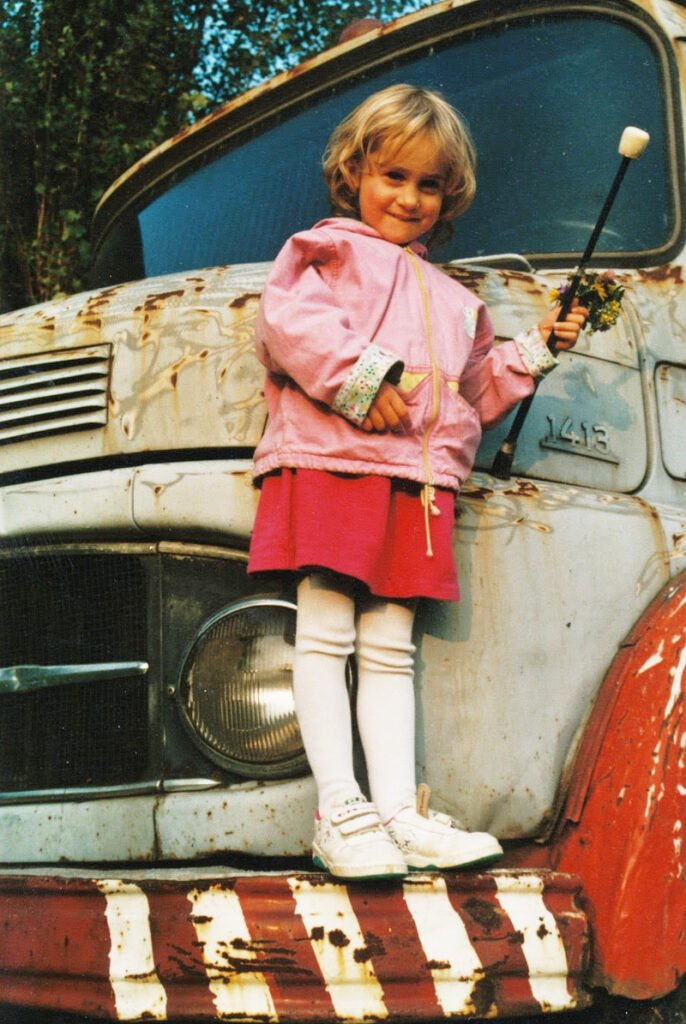articles
China Elevator Stories
When Blonde Changes to Brown
We take it for granted that people know how hair colors change, but this is not common knowledge in some cultures.
09/08/2025

Ruth Silbermayr
Author

One thing Central Europeans take for granted, but isn’t common knowledge in certain areas of the world, is that hair colors can change as we get older. Now, this is not the case for everyone, but many people in Central European countries are born with blonde hair, which later changes to brown or black.
My younger son, when I told him I had once had blonde hair (I can’t quite remember what we were talking about, but somehow the topic of my hair color came up), didn’t believe I was telling him the truth. Now certainly, he was used to both himself and his brother having dark hair. He probably didn’t remember that his brother once had lighter hair, either. My older son had brunette hair when he was born, or almost blonde hair, just not completely light, and the last time I saw them in person in 2019 before seeing them again this year, he still had a lighter hair color. By now, his hair has turned completely black, just like his father’s! I didn’t get to see how it turned from a lighter color to black, since I have been excluded from my children’s lives for many years, and didn’t expect it to turn black either (I thought it would turn brown, maybe).
Anyways, our hair color is as it is. I used to dye my hair frequently when I was younger, but stopped doing so when I grew a bit older, since I found my natural hair color beautiful and found it unnecessary to change. I had dyed it red, purple, and black as a teenager and young adult, and somehow, I had the belief ingrained within me that my natural hair color wasn’t as beautiful as that of Austrian kids who had blonde hair. I’m not sure from whom I took on this belief, but there must have been some kind of majority opinion where blonde girls and women were seen as more beautiful than those with other hair colors, such as brown, and I took this belief on subconsciously.
Once I accepted my own natural hair color as beautiful, I stopped dying my hair.
Many Chinese I have met haven’t been able to observe Europeans or Americans who have “changing natural hair colors” over time, so they aren’t aware that our hair colors may change from a lighter to a darker color.
According to shunsalon.com, this change is due to the following reasons:
Many children born with blond hair experience a darkening of their hair colour before reaching puberty, with some even noticing changes by their 10th birthday. This phenomenon is caused by genetics and the amount of natural pigment, or melanin, in the hair. Melanin is produced by melanocytes, and the amount of eumelanin (black and brown) and pheomelanin (red) in the hair determines its colour. While blond hair is caused by a recessive allele, brown hair is dominant, and as children mature, the amount of eumelanin in their hair increases, causing once-blond children to develop brown hair.
I also once chatted with a Chinese woman who asked me when our older son’s eye color would change to mine. Since Chinese people usually have one eye color (usually in shades of brown to black, all within the same spectrum), some aren’t aware that eye colors don’t change once we are older, or that brown can’t change to green, since they simply don’t live in Europe or other areas where a wider variety of eye colors is common. My older son had a slight blue tone in his eyes at birth (which was a dark blue, not a light one), as a reflection over his brown eyes, but this later went away and they stayed brown. This particular woman believed his eyes would eventually change into my color because of genes. I don’t know why she thought they would change into my eye color, and not his dad’s, but maybe she thought so because his hair was more similar to my hair color than his dad’s.
According to www.whattoexpect.com, this is how eye color may change during childhood:
When does a baby’s eye color change?
The most dramatic eye color changes will probably occur when your child is between the ages of 3 and 6 months old. By that point, the iris has stashed enough pigment so you’ll be able to better predict what the final hue will be.
But even so, your baby’s eye color may still hold some surprises. Your baby’s eye color may continue going through a number of changes due to pigmentation of the iris until baby’s first birthday, and you may still notice subtle eye color changes (green eyes slowly turning hazel, say, or hazel ones deepening into brown) until she’s 3 years old. Just don’t expect brown eyes to revert to blue — dark eyes tend to stay dark for most babies.
Black, Indigenous and People of Color (BIPOC) infants are more likely to be born with dark, usually brown, eyes, though the shade may change slightly during the first year. Caucasian babies are more likely to be born with dark blue or slate-gray eyes that may change several times before the first birthday.
While some Chinese haven’t grown up learning how these things work biologically, some are very adept at discerning the shade of an eye color. While to us, we may simply remember that a person’s eye color was brown, they may be able to remember the exact shade, if it was darker than another person’s, in very minute detail. They seem to see shades of brown or black other people don’t! I find this very fascinating, particularly since I usually just scan over such details without paying much attention to them.
Has your hair color changed growing up?